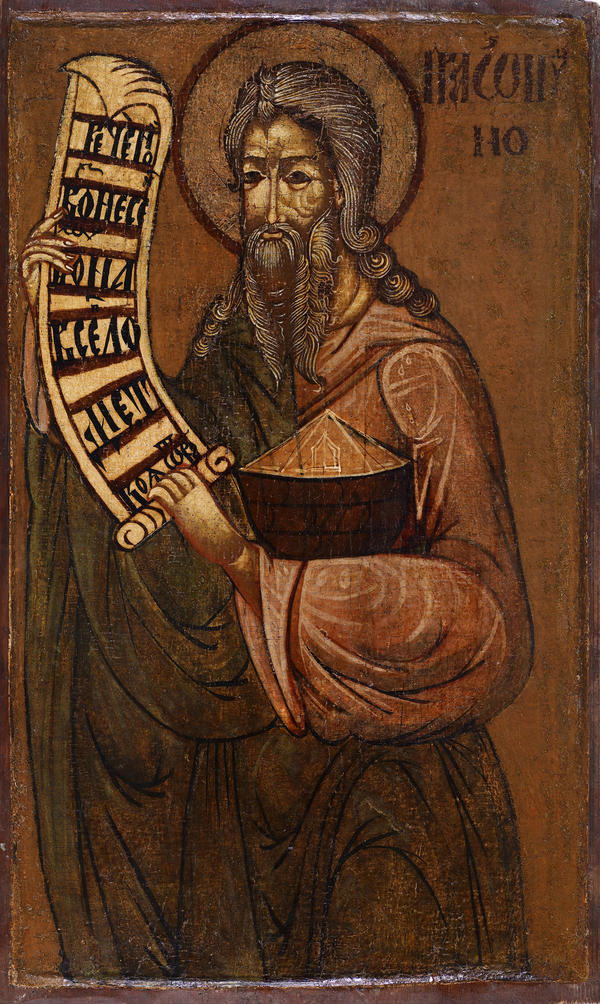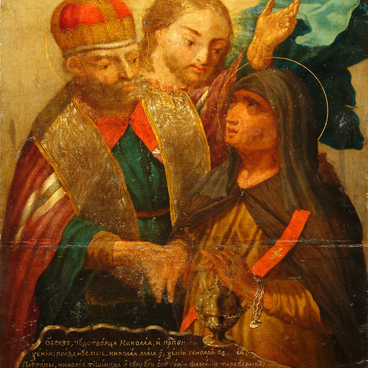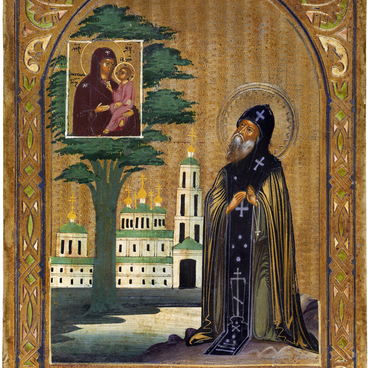Noah is the tenth (the last) of the Antediluvian patriarchs who were direct descendants of Adam. His hagiography can be found in the Book of Genesis of the Old Testament. According to the Bible, God, wishing to save the righteous man, alerted Noah to the upcoming worldwide flood sent to mankind for its sins. God ordered Noah to build an ark and take all his family and animals on it: a pair of each species and 7 pairs of sacrificial ones. According to legend, Noah had been building the ark for 120 years, it is believed that he even grew the trees to make the vessel on his own. All these years, the prophet encouraged people to repent and also climb the ark. However, no one listened to the prophet. When the waters of the global flood descended, the vessel was washed ashore to the top of Mount Ararat. There is no evidence that the modern Mount Ararat is the very peak.
The iconography of the prophet Noah had several narratives, the image of the ark was invariably present in each of them. On the icon from the collection of the Rybinsk Museum Reserve, the prophet was depicted almost in full height. With one hand he presses a model of the ark to his body and holds a scroll with the other.
The iconography of the prophet Noah had several narratives, the image of the ark was invariably present in each of them. On the icon from the collection of the Rybinsk Museum Reserve, the prophet was depicted almost in full height. With one hand he presses a model of the ark to his body and holds a scroll with the other.



